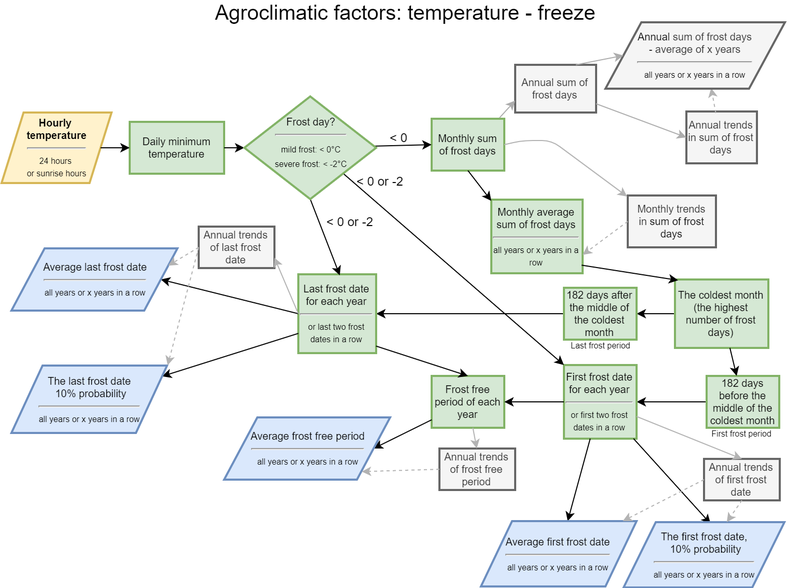| Pavel Hájek
This team aims to demonstrate several options for meteorological data exploitation for the needs of African farmers. During previous INSPIRE Hackathons, we worked on an Agroclimatic map of a selected region, on a tool alerting farmers about forecasted severe weather conditions or on a Climatic Services for Africa.
Within the challenge for Kampala INSPIRE Hackathon there is an idea of how to search for trends in climatic data because future climatic conditions can be inspected and potentially forecasted based on temporal trends in climatic data.
Therefore we plan to provide a proof of concept scenario in which a user enters coordinates (i.e. choose a locality), he/she will get information about several climatic variables. So far, there is a script ready and deployed on a server, which calculates a variable we call Frost-free period, frost dates. The description of how we perceive such a variable is depicted in blog post called “Agroclimatic factor of interest: Frost-free period, frost dates” (http://www.euxdat.eu/2020/03/05/agroclimatic-factor-of-interest-frost-free-period-frost-dates/) and a description of its calculation using Jupyter notebooks computing platform within the European project called EUXDAT is presented in blog “A calculation of an Agroclimatic factor of interest: Frost-free period, frost dates” (http://www.euxdat.eu/2020/03/18/a-calculation-of-an-agroclimatic-factor-of-interest-frost-free-period-frost-dates/).
The overview of the calculation of the mentioned climatic variable is descripted in the Figure below:

There is a tool with GUI calculating such a variable (at the moment spatially limited to Europe), which you can try freely on https://frostdates.test.euxdat.eu/ (login : testuser / password : euxdat).
Of course, it is not a real deal for the area of Africa, but such as the variable of Frost dates, there could be another variable calculated based on an algorithm. We would like to make in the Hackathon algorithms for variables such as Annual/Seasonal Evapotranspiration and precipitation, Solar radiation, or others.
And there is the space for you, if you have any algorithm created or an idea how to create such an algorithm, which could be deployed using Python language, feel free to contact Pavel Hájek, a representative of Challenge 6: Climate Change Trends for Africa, using email pavel.hajek21 (ET) gmail.com.
